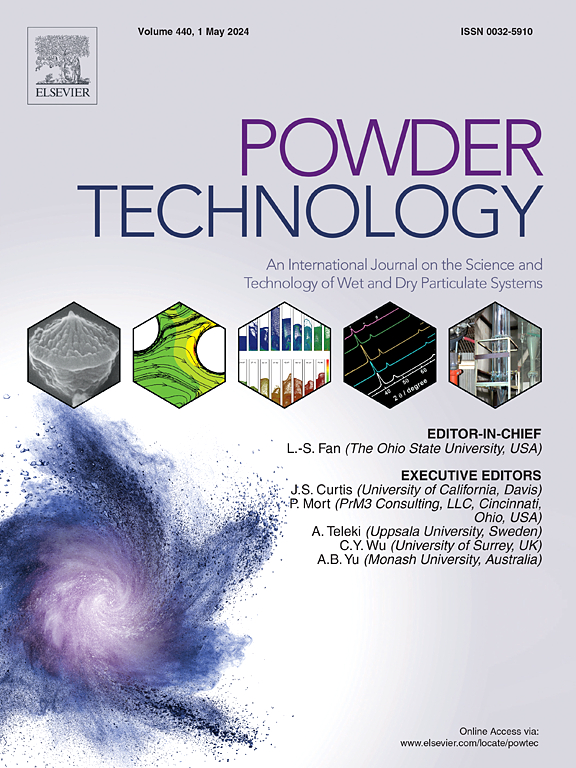Dynamic adhesion measurement of powders using the drop testing method: Defining a window of operation
IF 4.5
2区 工程技术
Q2 ENGINEERING, CHEMICAL
引用次数: 0
Abstract
Powder adhesion often presents challenges within the pharmaceutical industry as it significantly affects powder flowability and understanding its relationship with powder flow, especially through modelling, presents a major advancement. Traditional approaches such as atomic force microscopy (AFM) and centrifuge method were previously utilised to measure the adhesive force of particles, however, these methods are both time and cost intensive necessitating the need for a more practical solution. This work endeavoured to investigate and develop a window of operation for measuring the effective work of adhesion of both regular and irregularly shaped powders using the drop test method, previously developed at the University of Leeds. For optimisation and accuracy in obtaining the critical diameter of adhesion, the drop test rig was further developed so as to ensure reliable and repeatable measurements of the impact velocity and contact time, which previously posed major challenges. The effective work of adhesion of ibuprofen powders across different sample volumes was measured, to establish a minimum number of analysed particles for ensuring the accuracy of the measured critical diameter. A minimum of 640 ibuprofen particles was required resulting into an effective work of adhesion of 19.6 ± 2.9 mJ/m2. Moreover, the approach was tested on spherical particles, where effective work of adhesion of spherical aluminium-alloy powders (7.7 ± 1.8 mJ/m2) was assessed. Furthermore, artificial intelligence is incorporated in parallel to effectively determine the critical diameter and compare it to the manually calculated values allowing for an efficient image analysis.

求助全文
约1分钟内获得全文
求助全文
来源期刊

Powder Technology
工程技术-工程:化工
CiteScore
9.90
自引率
15.40%
发文量
1047
审稿时长
46 days
期刊介绍:
Powder Technology is an International Journal on the Science and Technology of Wet and Dry Particulate Systems. Powder Technology publishes papers on all aspects of the formation of particles and their characterisation and on the study of systems containing particulate solids. No limitation is imposed on the size of the particles, which may range from nanometre scale, as in pigments or aerosols, to that of mined or quarried materials. The following list of topics is not intended to be comprehensive, but rather to indicate typical subjects which fall within the scope of the journal's interests:
Formation and synthesis of particles by precipitation and other methods.
Modification of particles by agglomeration, coating, comminution and attrition.
Characterisation of the size, shape, surface area, pore structure and strength of particles and agglomerates (including the origins and effects of inter particle forces).
Packing, failure, flow and permeability of assemblies of particles.
Particle-particle interactions and suspension rheology.
Handling and processing operations such as slurry flow, fluidization, pneumatic conveying.
Interactions between particles and their environment, including delivery of particulate products to the body.
Applications of particle technology in production of pharmaceuticals, chemicals, foods, pigments, structural, and functional materials and in environmental and energy related matters.
For materials-oriented contributions we are looking for articles revealing the effect of particle/powder characteristics (size, morphology and composition, in that order) on material performance or functionality and, ideally, comparison to any industrial standard.
 求助内容:
求助内容: 应助结果提醒方式:
应助结果提醒方式:


